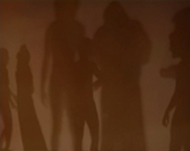 |
Duncan Marquiss
A Nothing With A Vengeance, 2008
5’ 00”
This film takes as its starting point a visual analogy made between Maya Deren’s film The Very Eye of Night and Ralf Bakshi’s animated version of The Lord of the Rings, films in which silhouetted figures perform creation myths. ‘A nothing with a vengeance’ is a quote from Aldous Huxley’s book The Devils, in which Huxley describes nihilistic forms of ecstasy as ‘downward translucence’. In Marquiss’ A Nothing With A Vengeance, a community destroy themselves through intoxication. The film eventually consumes itself too, as the projector becomes a smoking crucible.
|
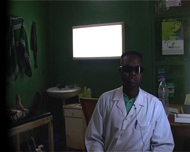 |
Neil Beloufa
Kempinski, 2007
14’ 00”
Welcome to Kempinski. The people of this mystical and animist place introduce us. ‘Today we have a space station. We will launch space ships and a few satellites soon that will allow us to have much more information about the other stations and other stars’ This science-fiction documentary has no script and its scenario is caused by specific game rule. Interviewed people imagine the future and speak about it in the present tense.
|
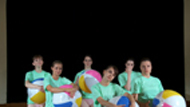 |
Andy Parkman
Neptune, 2008
3’ 00”
If an object is taken out of its natural environment it can be viewed solely as an object. Removing it from its usual context allows an object to be viewed formally. A formal reading of an object encourages a re-assessment of one’s relationship towards that object, and how that relationship is understood. Parkman uses this technique of removal and re-examination to create fruitful new readings of objects we would usually find commonplace or everyday. By creating environments for the ‘re-viewing’ of things that possess a mystical or filmic quality, the limits of the imaginative processes inspired by such objects are increased.
|
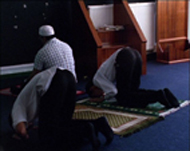 |
Anna Lucas
Seventh Heaven, 2008
9’ 20”
Seventh Heaven is set on the top floor of a state run secondary school for boys in East London in the last term before the school is knocked down. The film is a simple observation of a group of staff and teenage pupils in the corridors, art rooms, exclusion room, and an empty classroom used as a makeshift mosque. With panoramic views of London, the seventh floor is a place of partial escape where the relative freedom of activity and empty space are the questionable outcomes of a disintegrating education system.
|
 |
Ming Wong
Fassbinder’s Cleaning Ladies, 2008
3’ 09”
In this remake of a scene from Werner Fassbinder’s film Ali: Fear Eats the Soul (Germany, 1974), four cleaning ladies express their views on foreign workers. All parts are played by the artist himself, speaking in a foreigner’s German.
|
 |
Claire Hope
Complex Financial Instruments (part 1), 2008
7’ 39”
Footage of a progressive conversion of old farm buildings is inter-cut with images of corporate new buildings, archeological and degraded sites and natural states of the land. The soundtrack depicts a private business meeting debating the realisation of a fantasy landmark-building project. The visual material shifting between stills and self-consciously edited video becomes problematically intertwined with the themes of the soundtrack as they extend into absurdity. Seeking to raise questions about power, systems of belief and contemporary subjectivity.
|
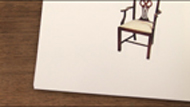 |
Grace Schwindt
The Chair20O8
9’ 47”
“The Chair is about a story my Grandmother told me. During the occupation of Berlin in 1945, her mother tried to keep a chair from the Russian soldiers. The soldiers were let in the city two months before the occupation system was set up. I always wondered what kind of chair she risked her life for. Only later I found out that the chair is a substitute for another event. It turned out that while my Great Grandmother tried to save the chair, my Grandmother was raped in a room next door, being one of thousands of victims.” -Grace Schwindt
|
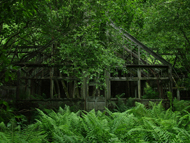 |
Lois Rowe
Argument from Design, 2006
4’ 38”
This work attempts to build an argument that the colours green and black, while diametrically opposed to each other, benefit from their compatible characteristics when working together as a pair. As the viewer is guided through a copse to an abandoned greenhouse by the narrator’s voice, an animistic worldview emerges. |
 |
Beatrice Gibson & Alex Waterman
A Necessary Music (A Film About Roosevelt Island New York), 2008
29’ 09”
A Necessary Music is a science fiction film about modernist social housing. A musically conceived piece, referencing the video operas of Robert Ashley, the film explores the social imaginary of a utopian landscape through directed attention to the voices that inhabit it.
Roosevelt Island is a small sliver of land situated between Manhattan and Queens, intersected by the Queensborough Bridge. Formally known as Welfare Island and originally home to New York's largest insane asylum, a small pox hospital, and a range of other 19th century municipal facilities for incarceration, it now houses one of the cities most visible, yet little-known modernist social housing projects. The subject of several architectural competitions during the 1960's that employed the island as a laboratory site, proposing a range of re-imagined futures, from a floating casino, to a Museum of Egyptian Artifacts, to a cemetery, to a Disney-like water and entertainment park, its current status is the result of the winning entry of Philip Johnson. Johnson's master plan proposed a mixed income, enclosed utopian community: a bucolic concrete enclave, divided into three residential developments.
Treating the medium of film as both a musical proposition and a proposal for collective production, A Necessary Music employs the resident of New York's Roosevelt Island as its authors and actors, gathering together texts written by them and using them to construct a script for the film. Casting seventeen residents to enact these lines accompanied by a fictional narration take from Adolfo Bioy Casares' 1941 science fiction novel 'The Invention of Morel', the film deploys fiction as a tool to frame and activate its site. Self-consciously dissolving from attempted realism to imagined narrative, what begins as a process concerned with sociality becomes instead an ethnographic fiction about place and community, and an investigation into representation itself.
A project by artist Beatrice Gibson, developed in collaboration with composer Alex Waterman. Narration by Robert Ashley. |
Salon ’09 Touring Programme Selectors:
Anja Kirschner (born 1977, Munich, lives in London) trained at the Slade School of Fine Art and the School of the Art Institute of Chicago. Her work spans a number of disciplines – film, painting, drawing and music – and collapses documentary and historical sources, literary themes and popular genres such as sci-fi and adventure films. Her film, POLLY II, Plan for a Revolution in Docklands, has been acclaimed for exploring themes central to Kirschner's work: the divisions and exclusions imposed through law, language, race and property and the difficulties and possibilities of social and political transformation. Kirschner recently exhibited with Hollybush Gardens at Art Basel / Art Premiere, in Basel, Switzerland, June 2008.
Benjamin Cook is Director and founder of LUX, London, a UK agency for the exploration of ideas around artists’ moving image practice. He originally trained as a journalist and a film archivist and has worked for the Anthology Film Archives, New York and the Northern Film Archive, Gateshead. He has worked freelance as a programmer for many venues and international film festivals, including the National Film Theatre and was the founder of the London Pan-Asian Film Festival. He has written widely on film and is the editor of The Animate! Book, Re-Thinking Animation (2007) and Subjects and Sequences: A Margaret Tait Reader (2007).
|